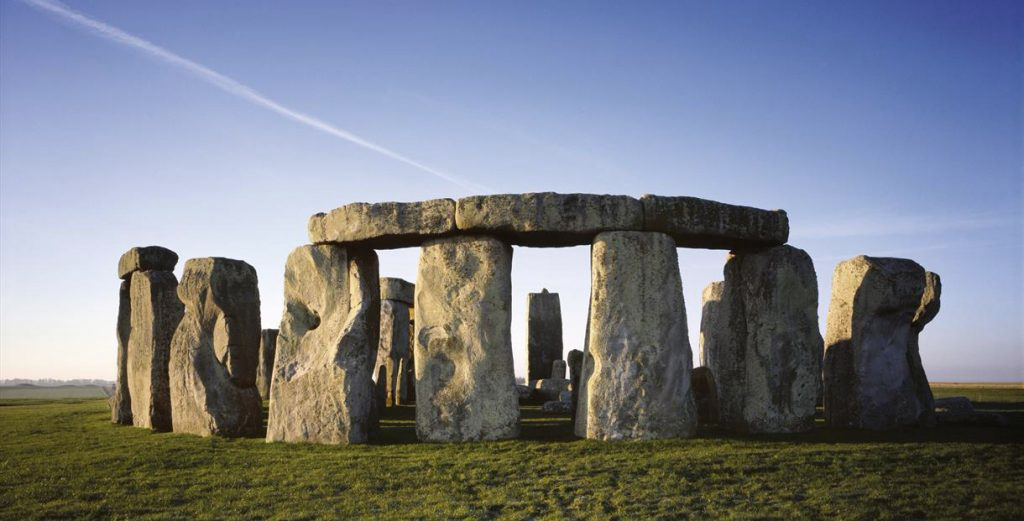Introduction
The Significance of Prehistoric Architecture
Ancient engineering is the investigation of structures and designs built before the development of composing. It is an entrancing and significant field of exploration, as it can furnish us with bits of knowledge into the lives and societies of our earliest predecessors.
Ancient engineering can be viewed as everywhere, and it takes a wide range of structures. Probably the most well known models incorporate Stonehenge, the Incomparable Pyramids of Giza, and the Nazca Lines. These designs are amazing accomplishments of designing, yet they additionally inform us something regarding the convictions and upsides of individuals who constructed them.
Scope of the Article
This article will give an outline of ancient engineering, from its earliest starting points to its getting through inheritance. We will investigate the different structure materials and strategies utilized by ancient social orders, as well as the motivations behind their designs. We will likewise investigate probably the most notable ancient designs from around the world, and talk about their building importance.

The Dawn of Architecture – Prehistoric Architecture
The Emergence of Prehistoric Building
The first evidence of architecture prehistoric dates up to Paleolithic period, which was around 40 000 years ago. In this period the human race was a nomadic hunter-gatherer and their homes were usually minimal and temporary. As societies grew more complicated and settled, the population began to build more permanent and intricate structures.
The Role of Prehistoric Societies
Ancient social orders assumed a fundamental part in the improvement of engineering. As individuals lived in bigger and more long-lasting settlements, they expected to track down ways of building structures that could oblige their requirements. This expected advancement and collaboration, and it prompted the improvement of new structure materials and methods.
The First Architectural Techniques
Some of the earliest architectural techniques used by prehistoric societies include:
- Post-and-lintel: This technique involves using vertical posts to support horizontal beams. It is one of the most established and most essential development procedures, and it is as yet involved today in many areas of the planet.
- Corbel vaulting: This technique involves stacking stones or bricks in a way that they gradually overhang each other, forming a vaulted ceiling. It is a more complex technique than post-and-lintel, but it allows for the construction of larger and more durable structures.
- Megalithic construction: This technique involves using large stones, known as megaliths, to build structures. Megalithic construction is often associated with prehistoric monuments, such as Stonehenge and the Carnac Stones.
Building Materials in Prehistory
Natural Resources as Construction Materials
Prehistoric societies used a variety of natural resources to build their structures. The most common materials included:
- Stone: Stone is a sturdy and flexible material that can be utilized to construct many designs. It was utilized by ancient social orders to fabricate everything from straightforward cottages to complex landmarks.
- Wood: Wood is another normal structure material that is not difficult to work with and can be utilized to construct various designs. In any case, it isn’t quite so sturdy as stone, and it is more helpless to fire and spoil.
- Earth: Earth is a promptly accessible and simple to-work-with material that can be utilized to construct various designs, for example, smashed earth walls and adobe blocks. Nonetheless, it isn’t generally so strong as stone or wood, and it is more vulnerable to disintegration.
Stone-Age Building Materials
During the Stone Age, the most widely recognized building materials were stone and wood. Stone was utilized to assemble establishments, walls, and rooftops. Wood was utilized to assemble edges, entryways, and windows.
Organic Materials in Ancient Construction
In addition to stone and wood, prehistoric societies also used a variety of organic materials to build their structures. These materials included:
- Branches: Branches were used to build frames for huts and other structures. They were also used to make woven mats that could be used to cover roofs and walls.
- Leaves: Leaves were used to cover roofs and walls. They were also used to make bedding and other household items.
- Animal skins: Animal skins were used to cover roofs and walls. They were also used to make clothing and other household items.
Tools and Techniques – Prehistoric Architecture
Primitive Tools of the Trade
Prehistoric societies used a variety of primitive tools to build their structures. These tools included:
- Stone axes: Stone axes were used to cut and shape stone.
- Wooden hammers: Wooden hammers were used to drive stakes and rocks into the ground.
- Antlers: Antlers were used to dig holes and move rocks.
- Fire: Fire was used to harden wood and to create lime mortar.
Innovative Building Techniques
Despite their primitive tools, prehistoric societies developed a number of innovative building techniques. For example, they learned how to build corbeled vaults and megalithic structures. They additionally created strategies for moving and putting enormous stones, like the utilization of slopes and switches.
One of the most amazing instances of ancient structure innovation is the Incomparable Mass of China. The wall was worked throughout a period of many years, and it is conceivably of the longest man-made structure on earth. The wall is made of stone, block, and earth, and it is propped with zeniths and slopes.
One more great illustration of ancient designing is the Nazca Lines in Peru. The Nazca Lines are a progression of geoglyphs, or monster drawings, that were made in the desert sand. The lines portray various creatures, plants, and mathematical shapes. They are remembered to have been made by the Nazca public, who lived nearby from around 200 BC to 600 Promotion.

Construction Methods of the Past – Prehistoric Architecture
Prehistoric societies used a variety of construction methods, depending on the materials they had available and the type of structure they were building.
One common construction method was to build a frame of posts and beams. The frame was then covered with materials such as woven mats, animal skins, or mud bricks.
Another common construction method was to build walls using rammed earth. Rammed earth is a mixture of soil, water, and sometimes other materials, such as gravel or straw. The mixture is tamped down into a mold to create a dense and durable wall.
Shelter or More? The Purpose of Prehistoric Structures
Prehistoric structures served a variety of purposes. Ancient designs filled different needs. A few designs were utilized as safe houses, while others were utilized for strict, stylized, or guarded purposes.
The absolute most normal kinds of ancient designs include:
- Dwellings: Ancient homes were utilized as safe houses for individuals and their possessions. Abodes could be straightforward cottages or more intricate designs, for example, longhouses or pueblos.
- Sanctuaries and shrines: Ancient sanctuaries and altars were utilized for strict and stylized purposes. They were frequently enlivened with carvings and other craftsmanship.
- Fortifications: Prehistoric fortifications were used to protect people and settlements from attack. Fortifications could be simple walls or more complex structures, such as moats and castles.
Iconic Prehistoric Structures
There are numerous notorious ancient designs all over the planet. Probably the most well known models include:
- Stonehenge: Stonehenge is an ancient landmark in Wiltshire, Britain. It comprises of a ring of huge stones, known as stone monuments, and a few more modest stones organized in a horseshoe shape. Stonehenge was worked over a time of hundreds of years, and its motivation is as yet bantered by archeologists.
- Skara Brae: Skara Brae is a Neolithic town in Orkney, Scotland. It is quite possibly of the best-safeguarded Neolithic town in Europe. The town comprises of eight stone houses that were incorporated into a hill of sand and earth. Skara Brae was deserted around 2000 BC, and it was rediscovered in 1850.
- The Pyramids of Egypt: The Pyramids of Giza are three pyramids that were inherent Egypt during the Old Realm time frame. The biggest pyramid is the Incomparable Pyramid of Giza, which is one of the Seven Marvels of the Old World. The pyramids were worked as burial places for the pharaohs, and they are probably the most great instances of antiquated designing.
Design and Architecture
The Evolution of Architectural Styles
Prehistoric architecture evolved over time as societies became more complex and sophisticated. Early prehistoric structures were simple and functional, but later structures became more elaborate and decorated.
One of the most significant developments in prehistoric architecture was the invention of the arch. The curve is an underlying component that takes into consideration the development of enormous and sturdy designs. Curves were first utilized by the antiquated Mesopotamians, and they were subsequently embraced by different societies all over the planet.
One more huge improvement in ancient design was the utilization of sections. Sections are upward upholds that can be utilized to help rooftops and other underlying components. Sections were first utilized by the antiquated Egyptians, and they were subsequently embraced by different societies all over the planet.
Ornamentation and Decorations
Prehistoric societies often decorated their structures with carvings, paintings, and other forms of ornamentation. This ornamentation could serve a variety of purposes. It very well may be utilized to distinguish the proprietors of the design, to convey strict or stylized convictions, or basically to embellish the construction.
The absolute most popular instances of ancient ornamentation remember the cavern artworks at Lascaux for France and the stone carvings at Angkor Wat in Cambodia.
Conclusion
Summarizing Prehistoric Architectural Achievements
Prehistoric societies made significant achievements in architecture. They developed a variety of building materials and techniques, and they built structures for a variety of purposes, including shelter, religious ceremonies, and defense.
FAQs
What Were the Earliest Forms of Prehistoric Architecture?
The beginnings of ancient engineering are covered in the fogs of time. Probably the earliest known types of ancient design incorporate gigantic designs, like Stonehenge in Britain and the huge stones of Carnac in France. These landmarks date back millennia and stand as a demonstration of the early building ability of mankind. The specific motivation behind these designs stays a subject of discussion, adding to their perplexity.
How Did Prehistoric Humans Build Such Massive Stone Structures?
The construction of colossal stone monuments in the absence of modern technology is indeed a puzzling feat. While the precise techniques are not entirely known, it is believed that prehistoric people used simple tools and brute force to transport and arrange these enormous stones. The use of wooden sleds, levers, and manpower likely played a significant role. The burstiness of their ingenuity is evident in the audacity of their architectural endeavors.

